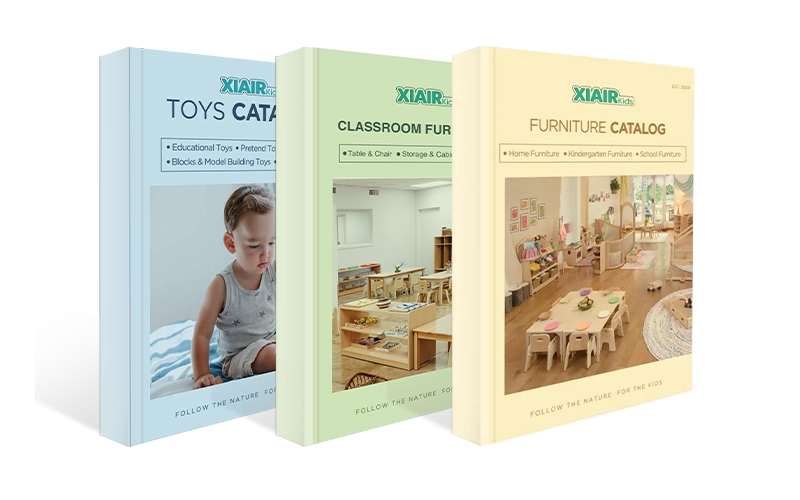Are you concerned about your child’s early literacy development and wondering how to help them build essential reading and writing skills from a young age?
Many parents and educators feel overwhelmed by the complexities of emergent literacy and how to nurture a child’s development in this crucial stage properly. Without a strong foundation in early literacy skills, children may struggle to catch up in later years, potentially affecting their academic performance and confidence in learning.
The good news is that by understanding the emergent literacy process and engaging in simple, practical activities, you can help your child develop key skills that will set them on the path to reading success. This article will explore the importance of emergent literacy and provide practical strategies and activities to support early literacy development in children.

1. What is Emergent Literacy?
Emergent literacy refers to the skills, knowledge, and attitudes children develop as they interact with written and spoken language. These early literacy experiences happen before formal reading and writing instruction begins, often occurring during preschool. Emergent literacy in preschool is not just about learning the alphabet but also about developing a range of skills.
Marie Clay Emergent Literacy Theory

Marie Clay, a renowned researcher in early childhood education, developed the emergent literacy theory. This theory is premised on the idea that children bring their unique experiences and knowledge to learning to read and write. Clay emphasized that children’s early literacy behaviors are influenced by their interactions with the world around them, including caregivers, peers, and the environment.
Clay’s theory highlights the importance of children being active participants in their literacy development. According to her research, children learn best when exposed to print-rich environments, have opportunities to interact with books, and receive guidance from caregivers or educators who model literacy behaviors.
Emergent Literacy Definition
Emergent literacy is the process through which young children develop an understanding of the written and spoken language before they can read or write independently. This early stage of literacy development includes understanding print concepts, such as recognizing letters, sounds, and words, and realizing that print carries meaning.
At its core, emergent literacy is about laying the foundation for future literacy skills. The foundation begins with children exploring their environment, hearing language, and interacting with adults through reading, conversation, and play. Through these early experiences, children gain awareness of the structure and use of language, which sets them on the path to developing literacy skills.
Her theory has had a lasting impact on early childhood education, influencing how educators approach the teaching of reading and writing in the emergent stage of literacy development.
2. The Importance of Emergent Literacy
Emergent literacy is essential for the development of later reading and writing skills. This section will focus on the relationship between emergent literacy and language development, highlighting the key areas contributing to early childhood learning, including phonological awareness, print awareness, vocabulary acquisition, and fostering a love for reading.

Emergent Literacy and Language Development
Early literacy is closely tied to language development; emerging literacy and language development are interdependent. The more children are exposed to spoken or written language, the better their chances of developing strong literacy skills. Language development includes an understanding of grammar, sentence structure, and vocabulary. This foundation is critical in preparing children to read and write successfully.
Children acquire the language skills necessary to make sense of written texts later on through activities such as reading aloud, storytelling, and engaging in conversations. Listening to stories helps children understand narrative structures and expands their vocabulary, which is essential for developing literacy.

Receive a free catalog and custom layout to help you design your ideal classroom easily.
Promoting Learning in Early Childhood
Promoting emergent literacy is essential for cognitive development and academic success. Children are particularly receptive to language and literacy instruction during the early years, so fostering literacy during this time can have long-lasting effects. Early literacy experiences—such as having books read to them, playing word games, and discussing the stories—encourage children to develop a love for reading.
Moreover, emergent literacy activities for preschoolers help nurture this love for learning. These engaging activities support the development of critical thinking, language comprehension, and social skills, all of which are necessary for success in school and life.
Language Development
Language development is one of the primary benefits of emergent literacy activities for preschoolers. During these early years, children expand their vocabulary and develop their understanding of language structure. Activities like rhyming, singing, and storytelling enhance children’s language comprehension and communication ability.
Caregivers and educators can significantly contribute to a child’s language development by providing opportunities to engage in language-rich activities, such as reading stories and interacting with others.

Phonological Awareness
Phonological awareness is another cornerstone of emergent literacy skills in early childhood education. Phonological awareness involves recognizing and manipulating the sounds of language. Children develop this skill through games, songs, and rhyming activities that help them identify syllables, rhymes, and individual sounds.
This skill is vital for reading because it helps children decode words by linking sounds with letters. For example, children who can isolate the first sound in the word “cat” (the “c” sound) are better equipped to read and understand new words in the future.
Print Awareness
Print awareness refers to a child’s understanding that print has meaning and is used to communicate ideas. This includes recognizing that words are read from left to right and that writing corresponds to spoken words. Through emergent literacy activities, children learn that books have a front and back cover, that pages are turned in a specific direction, and that the words on the page form a story.
Encouraging children to look at books, point to words, and talk about pictures as they read helps foster this awareness. The more children engage with books, the stronger their print awareness becomes, setting the stage for more formal reading instruction.

Vocabulary Acquisition
Building a strong vocabulary is a key component of emergent literacy. Children’s vocabulary grows through interactions with adults, exposure to stories, and participation in conversations. Hearing and using new words in different contexts helps children understand their meanings and learn how to use them effectively in speaking and writing.
Developing a robust vocabulary enhances a child’s ability to comprehend texts and express their thoughts clearly. Vocabulary acquisition is crucial for reading and understanding spoken language and performing well in school.
Love for Reading
Finally, one of the most critical aspects of emergent literacy is fostering a love for reading. Children who develop a positive attitude towards books and reading are likelier to engage in independent reading later in life. Reading aloud to children, exposing them to various books, and encouraging them to “read” independently are all strategies that help build this love.

3. How Children Develop Literacy?
Literacy development is a gradual, multi-stage process that begins at birth and continues into adulthood. It involves acquiring various skills, from recognizing sounds and symbols to understanding complex texts and expressing ideas through writing. Each phase of literacy development builds upon the previous one, and understanding these stages helps parents and educators provide age-appropriate support. While children progress at different rates, there are five generally recognized stages in literacy development, each marked by distinct learning milestones.
Emergent Literacy (0–5 years of age)
Children begin to understand the basics of communication and printed language during the emergent literacy stage. This phase starts from birth, as babies and toddlers are immersed in the sounds of spoken language. Through exposure to books, conversations, songs, and storytelling, children begin to grasp that language has structure and meaning. By age five, many can recognize letters, understand that text conveys information, and show interest in “reading” familiar books by memory.

Alphabetic Fluency (5–8 years of age)
As children enter school, they transition into the alphabetic fluency stage. Here, they decode words using letter-sound relationships and recognize common sight words. Children learn how letters form sounds and how these sounds form words—a critical step toward fluent reading. They also begin to write using simple sentences and invented spelling based on how words sound.

Words and Patterns (7–9 years of age)
In the words and patterns stage, children recognize patterns within words, such as prefixes, suffixes, and word families. This stage overlaps with alphabetic fluency but introduces more complex spelling and vocabulary rules. Children develop a deeper understanding of language conventions, punctuation, and grammar. They move from sounding out every word to recognizing word chunks, which increases reading speed and accuracy.

Intermediate Reading (9–15 years of age)
The intermediate reading stage shifts from “learning to read” to “reading to learn.” Children are now able to tackle more complex texts across a variety of subjects. They read for enjoyment and to gather information, analyze ideas, and think critically. At this stage, vocabulary grows rapidly as children encounter more technical and content-specific words, especially in science, history, and literature.

Advanced Reading (15 to adult)
In the advanced reading stage, literacy is no longer a skill being learned—it is a tool used for higher-level thinking, communication, and exploration. Teenagers and adults in this phase can interpret abstract ideas, analyze arguments, and read across genres and disciplines. They can form well-supported opinions, conduct independent research, and communicate ideas through sophisticated writing.

Decoding: Decoding is translating written symbols into sounds and words. It relies on understanding letter-sound relationships and is essential for early reading success. Mastery of phonics supports accurate and fluent reading.
Fluency: Fluency is reading with speed, accuracy, and proper expression. Fluent readers can focus on comprehension rather than decoding each word. Repeated reading and oral practice help build fluency.
Vocabulary: A strong vocabulary enables children to understand what they read and express themselves clearly. Vocabulary grows through conversation, reading, and exposure to diverse texts. It’s a key predictor of reading comprehension.
Sentence Structure and Cohesion: Understanding how sentences are formed and connected improves reading comprehension and writing clarity. Teaching grammar, conjunctions, and transitions helps students express ideas logically and read with better understanding.
Experience, Reasoning, and Background Knowledge: Prior knowledge and life experiences shape how children understand texts. The more they know, the easier it is to make inferences, draw conclusions, and connect new ideas to existing ones.
Working Memory and Attention: Working memory allows children to hold and process information while reading, while attention helps them stay focused. Both are critical for understanding longer texts, following plots, and completing reading tasks effectively.
4. Suitable Emergent Literacy Activities for Preschoolers
Developing emergent literacy skills during preschool is essential to building a strong foundation for future reading and writing. Young children learn best through play, repetition, and interaction, making choosing engaging, developmentally appropriate activities rooted in language-rich experiences essential.
Phonological Awareness Games
Games like rhyming, clapping syllables, or “I Spy” with sounds enhance children’s ability to hear and manipulate language. These skills are essential for decoding words later on. Keep it playful and consistent for maximum effect. Try tongue twisters or simple chants to reinforce beginning sounds. Sort objects or pictures by their starting sounds for a hands-on experience. Encourage children to create their own rhymes or silly sound combinations.
Interactive Writing Activities
Let children draw, scribble, or “write” their own stories. Offer crayons, markers, and writing prompts. Encourage them to talk about what they’re drawing or “reading” back their stories. Introduce name-writing early to personalize their writing journey. Use story starters to inspire creativity and encourage sentence building. Allow invented spelling to be a natural part of early writing development.
Alphabet Recognition Activities
Use songs, flashcards, and magnetic letters to teach letter names and sounds. Focus on the letters in the child’s name first. Make learning multisensory with hands-on materials and repetition to help retention.
Incorporate movement by having children form letters with their bodies or in sand. Play alphabet matching or memory games to reinforce recognition. Create letter-of-the-week activities to focus on one sound at a time.

Print Awareness Exploration
Label everyday items around the house or classroom. Point out signs, menus, and packaging to show how print is used. Let children help write grocery lists or notes. Use daily routines—like setting the table or cleaning up—as opportunities to spot and use print. Provide books with clear print and point to words as you read aloud. Encourage children to notice environmental print, like store logos or street signs.
Take Your Time
When reading, pause to discuss the pictures, repeat new words, and allow your child to ask questions. Rather than rushing through a story, encourage your child to predict what will happen next or retell it in their own words. These actions develop comprehension, sequencing skills, and vocabulary. The same goes for routine tasks—describe what you are doing, name objects, and allow children to respond. The more time you give for these interactions, the deeper their engagement and learning.
Build on Their Words
Children often say the most imaginative things. Use those moments as opportunities to build their language and literacy skills. When your child says a word or a sentence, expand on it. For example, if a child says, “dog bark,” you might respond, “Yes, the big brown dog is barking loudly because he hears a noise.” This affirms the child’s words and introduces them to new vocabulary, sentence structure, and ideas.
Let Your Child “Write”
Ask them to “read” their writing to you, even if it’s just a string of marks or drawings. This builds confidence and reinforces the concept that writing is a way to express thoughts. As children gain more control over their fine motor skills, guide them gently towards forming shapes and letters, starting with the letters in their names. You can also use tools like sand trays, finger paints, or salt writing boards to make writing more sensory and fun. Activities that develop fine motor coordination—like playing with playdough, stringing beads, or using tongs—also support the physical skills needed for writing.
Play Word Games
Word play is a fun and effective way to build phonological awareness, which is the ability to recognize and manipulate the sounds in words—a critical skill for learning to read. Depending on your child’s age and development, you can adjust the complexity of the games.
Babies
Word games focus on sound exposure and listening for babies. Sing nursery rhymes, talk about what you’re doing, and play peekaboo while emphasizing specific words. Babies are naturally drawn to rhythm and repetition, which supports language learning. Name body parts, toys, and actions throughout the day to build their receptive vocabulary.
Toddlers
With toddlers, begin introducing rhyming games and songs. Use fingerplays like “Itsy Bitsy Spider” or “Wheels on the Bus” that incorporate movements and rhymes. Ask them to find objects that rhyme or start with a specific sound. Repeat their responses and add more detail to keep them engaged and learning.
Preschoolers
Preschoolers can begin playing more structured word games. Try “I Spy” with sounds like “I spy something that starts with the ‘b’ sound.” Introduce alliteration and let them devise silly phrases like “Sammy snake sips soup.” You can also play matching games with picture cards, where they match images based on beginning sounds or rhyming words.
These games build awareness of how language sounds and functions, providing a strong foundation for decoding words when they begin to read.

5. How to Promote Emergent Literacy in the Classroom?
Promoting emergent literacy in the classroom is essential to creating a strong foundation for children’s future reading and writing abilities. As educators, creating an environment that supports the development of language, phonological awareness, and print concepts is crucial. Below, we’ll explore several classroom strategies for promoting emergent literacy.
Establish Routines
Establishing consistent routines is one of the most effective ways to promote emergent literacy in the classroom. Routines provide a sense of security for children and help them understand the structure of the day, which in turn promotes learning. A predictable routine also allows children to practice literacy skills during daily activities.
For instance, you can create a morning routine where children have time to engage with books. Start the day by reading aloud a simple, engaging story. During circle time, you could introduce new vocabulary words, ask children to repeat after you, and practice letter recognition by pointing to the letters in the room. As children become familiar with these routines, they will naturally pick up language skills, especially when they can predict what comes next.
Another key part of establishing routines is to incorporate repetitive language. During daily activities, songs, rhymes, and familiar phrases can significantly help reinforce phonological awareness, a key component of emergent literacy. When children hear rhymes or repeat words in songs, they begin recognizing patterns in language, which strengthens their early reading skills.
Read Often
Reading aloud to children regularly is one of the most effective ways to promote emergent literacy. Frequent reading sessions expose children to new vocabulary, sentence structures, and story formats, whether a short picture book or a longer story.
In the classroom, establish a daily reading routine. Dedicate specific times for reading aloud to the children and provide a variety of books covering different themes, genres, and levels of complexity. While reading, emphasize key concepts like characters’ names, the sequence of events, and basic print concepts such as the directionality of reading (left to right).
Additionally, it is essential to make reading a collaborative experience. Encourage children to engage with the text by asking them questions about the story, allowing them to predict what happens next, and even prompting them to “read” the pictures. This interaction enhances their comprehension and print awareness while sparking their interest in reading.
Practice Oral Language Skills
Focusing on developing oral language skills in the classroom is a cornerstone of emergent literacy. Children who can articulate their thoughts clearly and have a strong vocabulary are better prepared to understand written language.
To promote oral language skills, provide opportunities for children to engage in structured and unstructured conversations. During playtime, encourage conversations where children express their thoughts, feelings, and observations. Asking open-ended questions like “What do you think will happen next?” or “How does this story make you feel?” helps children develop expressive language and practice sentence formation.
You can also engage children in oral storytelling activities. Ask them to create stories based on images or experiences. This helps build language skills and encourages creativity and narrative thinking, which are foundational for later reading comprehension.

Encourage Conversation
Encouraging conversation between children is vital in promoting emergent literacy. Peer interactions provide children with opportunities to practice language skills in social contexts. Conversations help children understand the importance of communication, develop turn-taking skills, and learn how to listen attentively.
In the classroom, create opportunities for children to share their experiences and ideas. Group discussions, pair-share activities, and collaborative projects allow children to build vocabulary and gain confidence in using language.
To facilitate this, create a safe and inclusive environment where all students feel comfortable speaking. Encourage children to ask questions, connect to prior knowledge, and listen to their peers. The more children converse, the more they will develop fluency and comfort with language.
Incorporate Pre-Writing Activities
Before children can learn to write, they need to develop the fine motor skills and cognitive abilities required to make sense of written language. Pre-writing activities are a vital part of emergent literacy because they help children prepare for the physical and mental demands of writing.
Start by incorporating activities that promote hand-eye coordination and fine motor skills, such as tracing shapes, drawing lines, and practicing holding writing tools. Use activities like drawing, coloring, and cutting to build these skills enjoyably and interactively.
Additionally, pre-writing activities should include exercises that help children understand how written language works. Provide opportunities for them to “write” their own stories through scribbling or drawing, which allows them to know the purpose of writing. Labeling objects in the classroom and encouraging children to create their own labels or captions will reinforce their understanding of print concepts.

6. Early Parental Intervention is Critical
Promoting emergent literacy at home is one of the most potent ways parents and caregivers can support a child’s early development. Children absorb language and literacy skills long before formal education begins through everyday interactions, routines, and play. With just a few intentional practices, families can create an environment fostering the foundational skills needed for success in reading and writing.
Start by reading aloud daily. This is one of the most effective and enjoyable ways to build a child’s vocabulary, comprehension, and print awareness. Choose age-appropriate books with colorful illustrations, rhythmic text, and engaging stories. Make it interactive—ask your child questions about the story, encourage them to describe the pictures, and let them turn the pages.
Create a print-rich environment in your home. Label everyday objects such as furniture, toys, or kitchen items to help children recognize that print carries meaning. Keep various books within easy reach, and dedicate a cozy reading nook that invites your child to explore books independently.
Talk with your child often. Regular conversation builds language skills and introduces new words in context. Narrate your daily routines, describe your actions, and encourage your child to ask and answer questions. Listening and speaking are essential building blocks for later reading success.
Introduce pre-writing activities to develop fine motor skills and early writing habits. Offer crayons, markers, and paper for your child to draw and “write.” Praise their efforts, whether they’re scribbling or attempting to write letters. Please encourage them to write names, label drawings, or make pretend lists.
Sing songs, recite rhymes, and play word games. These activities build phonological awareness, helping your child hear and manipulate the sounds in words. Simple games like clapping syllables or finding rhyming words make learning fun and effective.
Finally, model a love for reading and writing. Let your child see you read books, write lists, or jot down notes. Your enthusiasm will influence their attitude toward literacy. When children know that reading and writing are valued in daily life, they’re more likely to engage with them themselves.
By weaving these simple yet powerful practices into daily routines, you can actively support your child’s emergent literacy development and lay the groundwork for lifelong learning.

7. Difference Between Early Literacy and Emergent Literacy
Understanding the difference between early and emergent literacy is essential for educators, parents, and caregivers. Both are integral stages of a child’s literacy development, but focus on different skills and concepts. Below is a comparison of the two.
| Aspect | Early Literacy | Emergent Literacy |
|---|---|---|
| Definition | Early literacy involves the skills and knowledge that children develop in preparation for formal reading and writing. It focuses on skills such as alphabet knowledge and phonemic awareness. | Emergent literacy is the stage before children can read or write independently. It includes the foundation skills that contribute to reading and writing, such as print awareness and vocabulary development. |
| Focus | Early literacy focuses more on learning to read and write. It involves specific skills such as decoding words and writing sentences. | Emergent literacy focuses on the foundation for reading and writing, including the understanding of spoken and written language, recognizing letters, and building vocabulary. |
| Skills Included | Skills such as letter recognition, phonemic awareness, and understanding print concepts. | Skills like recognizing the sounds of language (phonological awareness), understanding print, and forming early language patterns. |
| Age Range | Typically developed in children aged 4-6 years as they begin formal education. | Begins from birth and continues into the preschool years, setting the stage for formal literacy development. |
| Learning Approach | Involves structured teaching and formal learning, such as phonics instruction and handwriting practice. | Learning is more informal, focusing on interaction with the environment, language play, and exploration of books. |
Understanding these distinctions helps target the right developmental strategies for a child’s literacy growth at the right time.

Receive a free catalog and custom layout to help you design your ideal classroom easily.
Highly recommended books on emergent literacy
Certainly! Here are some highly recommended books on emergent literacy suitable for parents, educators, and caregivers aiming to support early reading and writing development in young children:
Professional Resources
- Emergent Literacy and Language Development: Promoting Learning in Early Childhood by Paula M. Rhyner
This book offers practical strategies and research-based insights for fostering language and literacy skills in early childhood settings. - Engaging Children with Print: Building Early Literacy Skills through Quality Read-Alouds by Laura M. Justice and Amy Sofka
A guide that emphasizes the importance of interactive read-alouds in developing children’s print knowledge and vocabulary. - Emergent Literacy: Writing and Reading, edited by William H. Teale and Elizabeth Sulzby
A comprehensive collection of research articles explores reading and writing development in young children. - Emergent Literacy: Lessons for Success by Sonia Q. Cabell
This resource provides evidence-based practices and lesson plans to support emergent literacy in early learners. - Assessment in Emergent Literacy by Khara L. Pence Turnbull and Laura M. Justice
A detailed guide on assessing young children’s literacy development to inform instruction and intervention.
Children’s Books for Emergent Readers
- Chicka Chicka Boom Boom by Bill Martin Jr. and John Archambault
An engaging alphabet rhyme book that introduces letters in a fun and memorable way. - Brown Bear, Brown Bear, What Do You See? by Bill Martin Jr. and Eric Carle
A repetitive and rhythmic book that helps children anticipate and recognize patterns. - Good Night, Gorilla by Peggy Rathmann
A nearly wordless book that encourages storytelling and vocabulary development through illustrations. - The Biscuit Series by Alyssa Satin Capucilli
Repetitive and straightforward text is ideal for building confidence in early readers. - Bob Books: Set 1 – Beginning Readers by Bobby Lynn Maslen
A series designed to introduce young readers to phonics and basic sentence structures.
FAQs
1. What are the differences between early literacy and emergent literacy?
Early literacy focuses on reading and writing skills like phonics and letter recognition. In contrast, emergent literacy involves foundational skills like phonological and print awareness, developed before formal reading and writing.
2. Why is parental involvement significant for emergent literacy?
Parental involvement is crucial because it provides a literacy-rich environment at home, helping children develop language skills, vocabulary, and a love for reading, which are essential for later literacy development.
3. What are some strategies for promoting emergent literacy in the classroom?
Effective strategies include reading aloud regularly, encouraging conversations, establishing routines, and incorporating pre-writing activities like drawing and tracing to support language and motor skills development.
4. When does emergent literacy begin?
Emergent literacy begins at birth as children are exposed to language, sounds, and interactions. It continues through the preschool years as children develop foundational skills like recognizing letters and understanding the concept of print.
5. What is the best way to encourage emergent literacy?
The best way to encourage emergent literacy is to read aloud regularly, engage children in conversations, and provide a print-rich environment with books, labels, and interactive language activities.
6. How to support emergent literacy?
Support emergent literacy by establishing daily reading routines, promoting phonological awareness through games, encouraging drawing and writing, and fostering a love for books through interactive storytelling.
Conclusion
Emergent literacy is crucial in early childhood development, laying the foundation for future reading and writing skills. It begins from birth and continues through preschool as children develop key skills such as phonological awareness, print awareness, and vocabulary. Parents and educators can establish routines, read aloud regularly, engage in conversations, and provide pre-writing activities to promote emergent literacy. A literacy-rich environment at home and in the classroom fosters a love for books and supports language development. Understanding the distinction between early literacy and emergent literacy allows for targeted strategies that ensure children build strong, lasting literacy skills from an early age. We help children prepare for academic success and lifelong learning by supporting emergent literacy.







